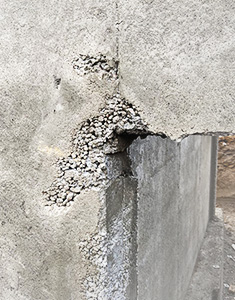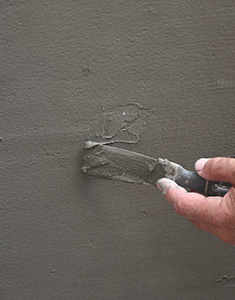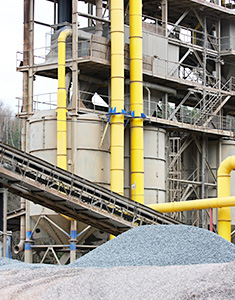
Enquire Now
Honeycomb formation in concrete structures has long been a concern in the construction industry, leading to compromised integrity and durability. However, with advancements in concrete technology and innovative practices, preventing honeycombing has become more achievable than ever.
Here we’ll address the causes of honeycomb formation, look into honeycombing in concrete repairs, and highlight the top cement brands in India that have the best cement for concrete.
A Complete Guide to Honey Combing in Concrete
What is Honeycomb Formation?

Honeycombs in concrete refer to voids or gaps left within the structure due to incomplete filling and consolidation during the pouring process. This phenomenon weakens the concrete, making it susceptible to water penetration, corrosion, and structural failure.
Causes Of Honeycombing
1. Inadequate vibration during pouring
2. Improper concrete mix design
3. Poor workmanship
4. Improper placement techniques
Preventing Honeycomb Formation

Preventing honeycombing requires a combination of proper materials, techniques, and construction practices.
Honeycombing can be avoided by using a well-graded aggregate mix. Therefore, ensuring adequate vibration during concrete placement, and employing proper placement techniques.
This includes ensuring proper formwork, avoiding excessive pouring heights, and using appropriate concrete mix designs.
Honeycombing in Concrete Repairs

Honeycombing often becomes a concern during concrete repair and rehabilitation projects. Repairing honeycombed concrete requires meticulous surface preparation, removal of loose particles, and filling voids with suitable repair materials. High-performance repair mortars and grouts, along with proper application techniques, are essential for restoring the structural integrity of damaged concrete.
Polymer-modified repair mortars offer excellent adhesion, flexibility, and resistance to water ingress, making them ideal for repairing honeycombed concrete. Additionally, incorporating additives such as air-entraining agents and water-reducing agents improves workability and reduces the risk of honeycomb formation during repair works.
So, why go into so much hassle?
Do it right in the first place by choosing the right cement that reduces the risk of honeycomb formation and saves you your time and money.
Choose The Best Cement For Concrete To Prevent Honeycomb Formation

Go for the top cement brand in India as it brings to the table the best cement for concrete. This ensures your structures are safe from the adverse effects of honeycombing and adds to the durability of concrete structures. MP Birla Cement is renowned for delivering superior concrete solutions. It brings you the best cement for concrete that mitigates the risks associated with honeycomb formation and improves the longevity of concrete structures.
Among the various types of cement available, Portland cement remains the most commonly used due to its versatility and reliability. However, blended cement such as Portland Pozzolana Cement (PPC) and Portland Slag Cement (PSC) offer improved performance and durability.PPC and PSC contain supplementary cementitious materials that enhance the properties of concrete, including reducing the risk of honeycombing. This blended cement provides better workability, durability, and resistance to chemical attacks compared to conventional Portland cement.
Final Word:

Preventing honeycomb formation in concrete requires a holistic approach that encompasses proper materials, techniques, and construction practices. By leveraging innovative concrete technologies and choosing the right cement products, builders and contractors can mitigate the risks associated with honeycombing and ensure the longevity of concrete structures.
Experience peace of mind as MP Birla Cement safeguards your investments with its superior durability, ensuring that your concrete structures stand the test of time.






